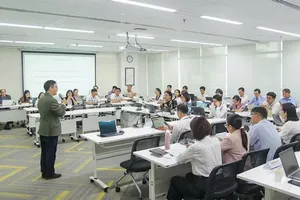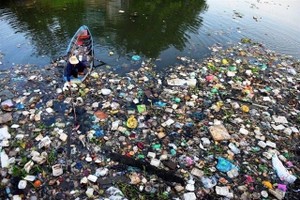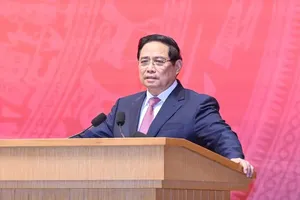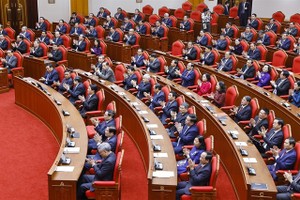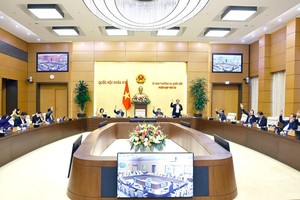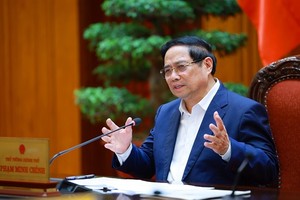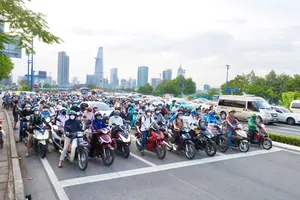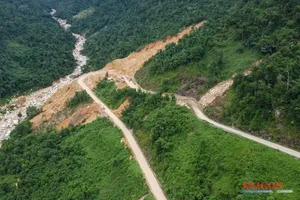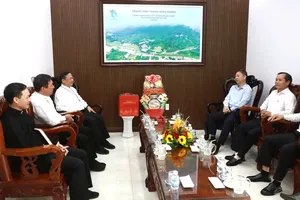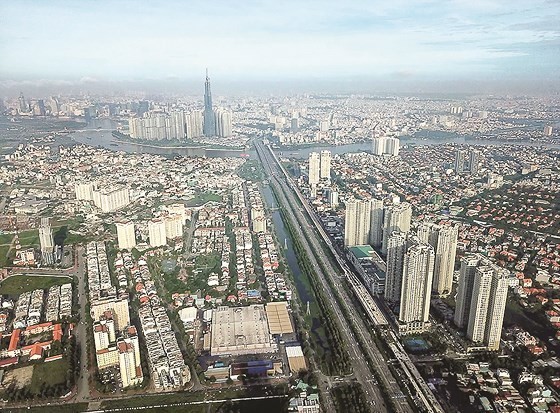
Representatives from ministries, sectors, localities and experts made many recommendations to improve the quality of urban life towards sustainable development at the 2022 national urban conference organized by the Ministry of Construction in collaboration with the Party Central Committee's Economic Commission yesterday.
According to the Ministry of Construction, the country has 888 urban areas. With the country’s GDP generated in cities, urbanization can contribute to sustainable growth through increased productivity and innovation if managed well. After the strong impacts of natural disasters and epidemics over the past time, cities have shown their central fundamental role, forming new opportunities and providing solutions to promote economic recovery.
However, Vietnam’s urbanization is facing particularly daunting challenges in the face of rapid and unplanned urbanization while as cities expand rapidly, there is a risk that infrastructure will not keep pace with their growth or the increased expectations of their populations. Urban renovation, embellishment and reconstruction have not been paid much attention and there is no master plan for implementation for limited resources whereas the government has not mobilized social resources. Worse, the current regulations on urban management have not met the real requirements.
According to Ms. Pham Thi Nham, Deputy Director of the National Institute of Urban and Rural Planning, the task of urban planning and development in the coming time will include several development goals, requiring concerted efforts of ministries, sectors and localities. Specifically, according to the Resolution 06-NQ/TW on urban planning, construction, management and sustainable development of Vietnam to 2030, with a vision to 2045, the urbanization rate of Vietnam needs to reach over 50 percent, striving to reach the average level of the ASEAN region.
Other indicators such as the percentage of the urban population using clean water must reach 100 percent while the rate of domestic wastewater treated in second-class urban areas or higher must reach 40-45 percent and the average residential floor area per capita strives to reach about 30 square meters.
At the same time, Vietnam's urban economy needs to reach about 85 percent of the country's GDP and the proportion of provinces and over 60 percent of cities directly under the Central Government must be self-financing. Last but not least, Vietnam will build at least 3-5 international urban brands, and the urbanization rate is in the middle and high group of ASEAN and Asia by 2030, Ms. Pham Thi Nham said.
According to Professor Dang Hung Vo, former Deputy Minister of Natural Resources and Environment, in order to develop urban areas effectively, the country needs outstanding funding to implement them. In particular, the funding source from the land abides by the economic law and it also followed the experience of countries that have completed industrialization. The state needs to shift the main source of revenue based on land value from the land acquisition mechanism to revenue from property taxes and from the added value of land brought about by urban development.
The mechanism of land transfer should be completely changed to the mechanism of land contribution and re-adjustment for all profitable investment projects and urban embellishment and development projects.
Also with the desire to find solutions to find resources for urban development, Mr. Nguyen Quang, former director of the United Nations Human Settlement Program, said that cities need to exploit resources such as land assets, productive capacity, and financial expertise. The State invests in infrastructure development to recover the added value of land where roads go through. Cities need to secure property rights through land registries and have a system in place that allows periodic updates on property and property ownership information.
In the context that funding is still limited, localities such as Hanoi and Ho Chi Minh City are trying to find solutions to create resources for urban management and development. From his experience in the management and development of Thu Duc City, Mr. Le Tran Kien, Deputy Director of the Ho Chi Minh City Department of Construction, said that management agencies need to perfect specific mechanisms and policies to attract investors.
In addition, the country is necessary to access loans from credit institutions and international financial institutions. Mr. Le Tran Kien also suggested that the local government should have solutions to increase the efficiency of land use along the corridors of rivers and canals and approve the plan to rearrange and handle the public land area.
